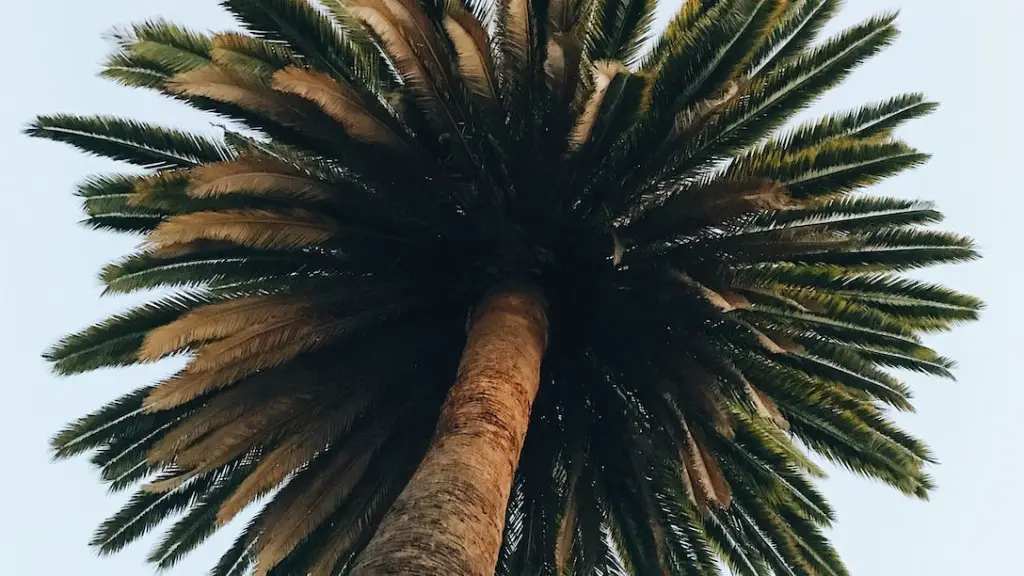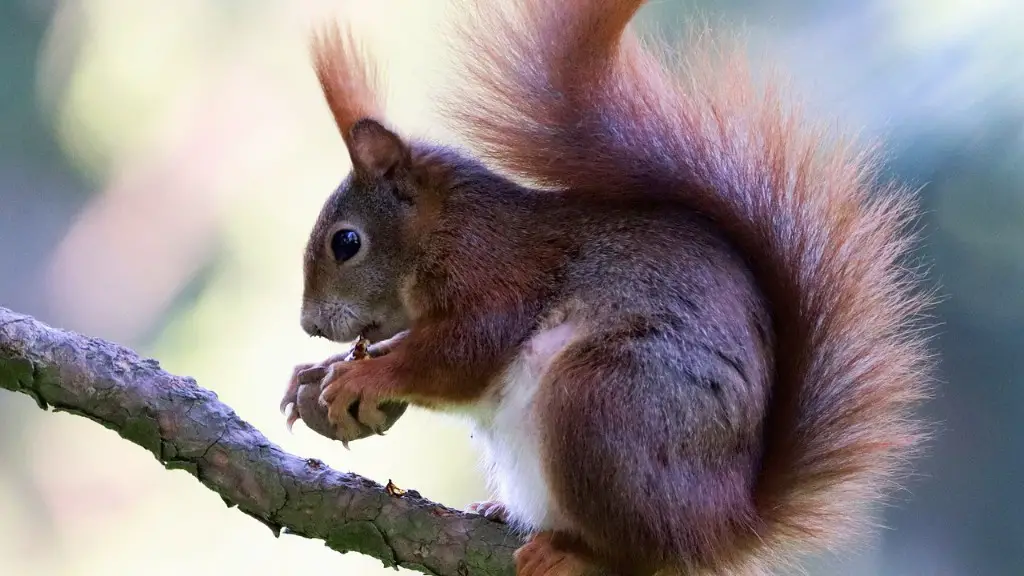Introduction
Painting palm tree fronds can be an intimidating task for an inexperienced painter. It requires a steady hand, patience, and a great deal of artistry. Although some painters may find it difficult to capture the life-like nature of a palm tree frond, there are a few simple steps that can be taken to make the process easier and more enjoyable. In this article, we will discuss the background of painting a palm tree frond, the necessary materials, and the step-by-step process of doing so. We will also provide some helpful advice from experienced painters for a successful palm tree painting experience.
Background Information
Palm tree fronds are typically composed of a single large fan-shaped leaf which extend outward from the tree. The individual fronds can have various shapes and sizes and are often used as decorative features in home and commercial settings. Painting a palm tree frond is a fascinating project which can be used as a work of art or as a means to spruce up a mundane room. With the proper materials and techniques, anyone can be successful in their endeavor of painting a palm tree frond.
Necessary Materials
The necessary materials to paint a palm tree frond are fairly simple and inexpensive. A canvas or paper for the surface, paints, brushes, and a paint palette are the most important items for the process. It may also be wise to have a piece of paper or cardstock handy as an extra painting surface in case of a mistake or an area of heavy saturation.
Technique
When painting a palm tree frond, there are a few key techniques to keep in mind. Firstly, it can be helpful to sketch the general form and design of the frond onto the canvas prior to painting. This will give the painter an edge in organizing the different elements of the frond, such as the leaves and veins. Secondly, painting in thin layers is essential in order to create a three- dimensional effect. This means gradually building up layers of paint as opposed to coating the entire surface with a thick blanket of paint.
Finally, it is important to mix different colors of paint together to create natural variations. This will lend a realistic touch to the finished painting. For example, when painting the leaves of the frond, combining a light green and a medium-green together will create a more life-like effect.
Advice from Experts
When it comes to painting a palm tree frond, experienced painters recommend taking it slowly in order to get the details as accurate and realistic as possible. Painting a few sections of the frond and then stepping back to look at the painting as a whole is a good way to gauge how the piece is coming along. Additionally, it can be helpful to take frequent breaks to let the painting “rest” for a few minutes before continuing. This will allow the painter to focus on one aspect of the painting at a time.
Conclusion
Painting a palm tree frond is an exciting project that anyone with a little determination and creativity can master. With the right materials, a steady hand, and a few expert tips, a beautiful and life-like painting can be created. With practice and patience, any novice painter can become a masterful painter of palm tree fronds.
Mixing Colours
Mixing colors correctly for painting palm tree fronds is key for achieving a realistic look. Depending on how vibrant or natural the painting should look, a range of colors from light greens to deep blue greens can be used to create the desired effect. Painters who desire a vibrant look should mix colors, such as lemon yellow, with blue greens and blues to create a sharp contrast. For a more natural look, painters should mix similar colors and shades, such as light and medium greens, in order to create subtle variations.
Using Brushes
When painting palm tree fronds, using different size and shape brushes is important. For the larger sections of the frond, using a flat and/or round brush is best, while smaller detail-based brushes, such as a fan and script brushes, can be used to paint the leaves and veins of the frond. It is also important to vary the pressure when painting the different sections of the frond in order to create a realistic and life-like effect.
Layer Painting
Creating a three-dimensional effect when painting palm tree fronds is key for a successful painting. Painting in thin layers, starting with the lighter colors and then gradually adding darker colors to create depth, is the best approach for achieving this effect. It is also important to wait for each layer to completely dry before moving onto the next, since adding too many layers too quickly can result in smearing and running of the paint.
Scumbling
Scumbling is a painting technique which involves using a light and dry brush to create delicate highlights and shadows on the palm tree frond. This technique can be used to add texture and depth to the painting, while also providing the detailed effect which is necessary for a more realistic outcome. Experienced painters recommend starting with the lightest colors and then gradually working up to the darker colors while scumbling.
Finishing Touches
Adding finishing touches to the painting of a palm tree frond can be done in various ways. It can involve using a dry brush or a layer of varnish for a glossy look. Additionally, painters can also choose to use an acrylic medium to add a layer of translucency to the painting. For an extra special touch, some painters choose to add a few accent colors to give the painting extra layers of depth.


